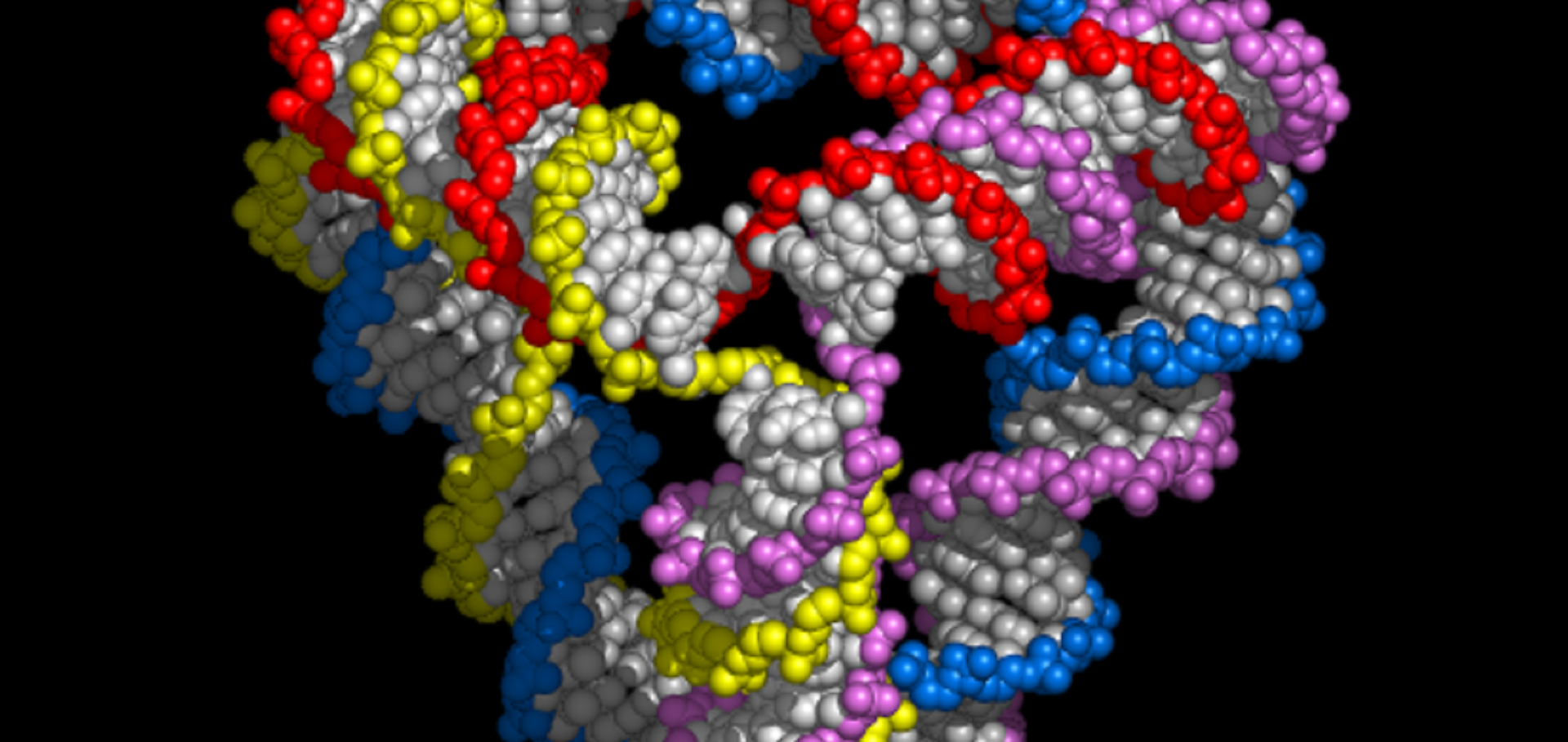A DNA-based molecular motor that can navigate a network of tracks
Nature Nanotechnology 7:3 (2012) 169-173
Abstract:
Synthetic molecular motors can be fuelled by the hydrolysis or hybridization of DNA. Such motors can move autonomously and programmably, and long-range transport has been observed on linear tracks. It has also been shown that DNA systems can compute. Here, we report a synthetic DNA-based system that integrates long-range transport and information processing. We show that the path of a motor through a network of tracks containing four possible routes can be programmed using instructions that are added externally or carried by the motor itself. When external control is used we find that 87% of the motors follow the correct path, and when internal control is used 71% of the motors follow the correct path. Programmable motion will allow the development of computing networks, molecular systems that can sort and process cargoes according to instructions that they carry, and assembly lines that can be reconfigured dynamically in response to changing demands. © 2012 Macmillan Publishers Limited. All rights reserved.Macromolecule synthesis by DNA templated chemistry
ABSTRACTS OF PAPERS OF THE AMERICAN CHEMICAL SOCIETY 243 (2012)
Reversible logic circuits made of DNA.
J Am Chem Soc 133:50 (2011) 20080-20083
Abstract:
We report reversible logic circuits made of DNA. The circuits are based on an AND gate that is designed to be thermodynamically and kinetically reversible and to respond nonlinearly to the concentrations of its input molecules. The circuits continuously recompute their outputs, allowing them to respond to changing inputs. They are robust to imperfections in their inputs.DNA cage delivery to mammalian cells.
ACS Nano 5:7 (2011) 5427-5432
Abstract:
DNA cages are nanometer-scale polyhedral structures formed by self-assembly from synthetic DNA oligonucleotides. Potential applications include in vivo imaging and the targeted delivery of macromolecules into living cells. We report an investigation of the ability of a model cage, a DNA tetrahedron, to enter live cultured mammalian cells. Cultured human embryonic kidney cells were treated with a range of fluorescently labeled DNA tetrahedra and subsequently examined using confocal microscopy and flow cytometry. Substantial uptake of tetrahedra into cells was observed both when the cells were treated with tetrahedra alone and when the cells were treated with a mixture of tetrahedra and a transfection reagent. Analysis of the subcellular localization of transfected tetrahedra using confocal microscopy and organelle staining indicates that the cages are located in the cytoplasm. FRET experiments indicate that the DNA cages remain substantially intact within the cells for at least 48 h after transfection. This is a first step toward the use of engineered DNA nanostructures to deliver and control the activity of cargoes within cells.DNA nanotechnology: geometrical self-assembly.
Nat Chem 3:8 (2011) 580-581


